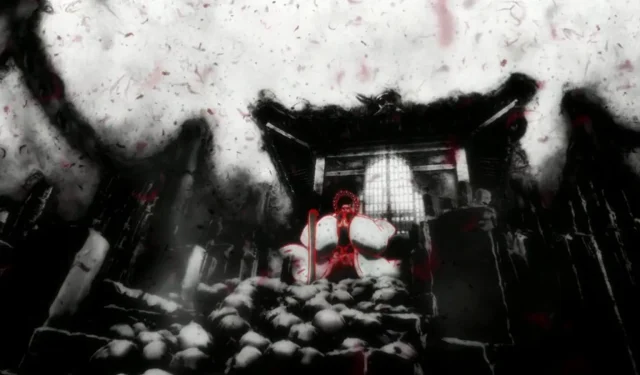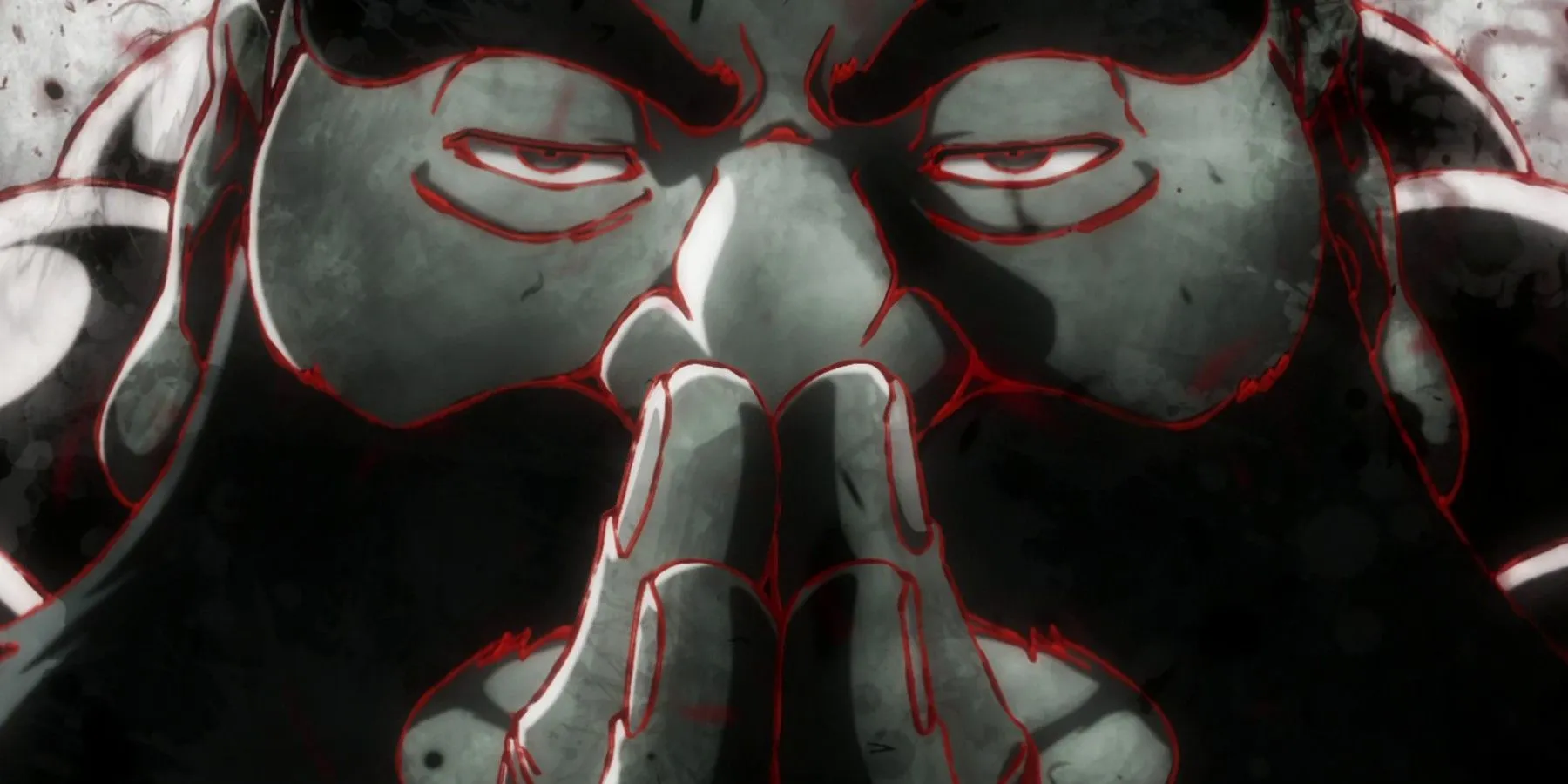
Essential Insights
- The Zero Squad is defeated by Quincy forces after Yhwach activates his Schrift “The Almighty.”
- Ichibē Hyōsube employs his Futen Taisatsuryō technique, which halts reincarnation by engulfing victims entirely.
- This technique, meaning “Slaughterous Mausoleum of Halted Reincarnation,”is aptly reflective of Yhwach’s demise.
BLEACH: Thousand-Year Blood War Part 3 – The Conflict commenced on Saturday, October 5, continuing directly from the conclusion of the previous segment last year. It showcased the peak of confrontations involving the Zero Squad, as the remaining members of the Soul King’s elite guard succumbed to their Quincy adversaries following the initiation of Yhwach’s Schrift, “A”– The Almighty.
Before his downfall, Ichibē Hyōsube, leader of the Zero Squad, executed a formidable technique that, in many situations, would signify the battle’s conclusion due to its inherent peril on a conceptual scale. But what exactly is Ichibē Hyōsube’s Futen Taisatsuryō technique, and how does it rank among his most formidable skills?
“Fall to a pitch-black Hell.”
The Technique Driven by Darkness
A Century’s Worth of Darkness Stolen

“Oh Twilight, endless darkness, draw near, have a sip, and as you do, your existence will wane. Flowers will flourish along the pathway to hell. Where are the fish? Let me tint them black, carve them, roast them over a dark flame, and then savor the delicacy. All that remains are white bones, turn them into a tombstone, a tribute. May they never return to life, sparing you from becoming sustenance.”
The Futen Taisatsuryō technique, translated as the Slaughterous Mausoleum of Halted Reincarnation or Magnificent Death Mausoleum in the VIZ version, is one of Hyōsube’s Zanpakuto abilities known as Ichimonji. In the first episode of BLEACH: Thousand-Year Blood War Part 3, titled “A”, Hyōsube swings Ichimonji, conjuring a wave of darkness, which he further collects into a sake bowl crafted from the same darkness. He chants an incantation akin to a traditional Japanese melody, moving rhythmically to the sounds of the koto and wad aiko (a traditional Japanese drum) in the backdrop. As he drinks from the bowl and draws dual concentric circles around his form, he locks his hands in a prayer pose. The swirling shadow envelops him, and the animation shifts to incorporate this ink-like aesthetic, highlighted by bleached lines that render a chilling atmosphere to the eerie song. As the setting fades into darkness, the circles etched by Ichimonji brighten against the inky background, leading to an eruption of innumerable gravestones from the void. The visual display is astounding, expanding outward from Hyōsube, showcasing a multitude of emerging human skulls across the darkened landscape.
An Unholy Shrine
The Ability That Annihilates Reincarnation

“These gravestones were forged by taking a hundred nights from Soul Society a century ahead. I have summoned them for your burial. They will consume the darkness that envelops you, crushing your blood, flesh, and bones into the deepest void of nothingness. Never to be reborn… You will be cast into the deepest pits of Hell.”
As Hyōsube’s technique reaches its zenith, a mausoleum or shrine forms behind him, and he elaborates on its catastrophic powers. It absorbs the darkness present in the surroundings and possesses immense destructive capabilities, capable of turning flesh and bone to dust, devouring them until they are entirely eradicated. The subjects of the Futen Taisatsuryō are wholly consumed to the degree that they vanish into the gathering darkness, obliterated beyond recognition, preventing any chance of reincarnation.
Hyōsube indicates that these gravestones originated from claiming a hundred nights from Soul Society a century into the future—an absolutely mind-boggling notion, especially as the technique channels the boundless essence of darkness, akin to the concept of nothingness. Nonetheless, despite the overwhelming potency of this skill, Yhwach’s The Almighty allowed him to foresee and navigate through the technique, ultimately besting Hyōsube, who was left humiliated and resorted to pleading with Ichigo Kurosaki to halt Yhwach from slaying the Soul King.
Dissecting the Kanji and the Technique
A Name That Haunts

Written as 不転太殺陵 in Japanese, “Futen Taisatsuryō”starts with “Futen,”a character often used for negation, akin to the English prefix “un-“. This is followed by “ten,”frequently associated with pronunciation changes in text but also relevant in the term “tensei,”meaning “reincarnation.”The subsequent character indicating repetition results in the term “tenten,”implying movement across various locations. The “tai”in “Taisatsuryō”can imply “fat,”but also denotes “grand”or “magnificent,”while “satsu”translates to “murder”or “slaughter,”and “ryō”suggests a domain, yet here, it references an imperial tomb or mausoleum—an edifice designed around the burial site of notable figures. Thus, the phrase “Slaughterous Mausoleum of Halted Reincarnation”accentuates the technique’s primary essence: intended to end the leader’s life so thoroughly that reincarnation becomes impossible, a fate fitting for Yhwach, the Quincy ruler.
This symbolism resonates with the title of the subsequent episode, “Kill the King,”which depicts Yhwach’s slaying of the Soul King, who, similar to Yhwach during Hyōsube’s invocation, stands powerless as his imminent demise looms. In Buddhist belief, achieving nirvana equates to breaking free from the cycle of death and rebirth, known as samsara. In contrast, the fate Hyōsube aims to inflict upon Yhwach evokes imagery of the most severe level of Buddhist Hell, Avīci—the “uninterrupted”Hell. Soul transgressors banished to Avīci are cast down into a state of despair (reminiscent of Yhwach’s designation as “Black Ant”), facing punishment for high crimes against sentient beings—acts Yhwach has committed or seeks to enact.




Leave a Reply